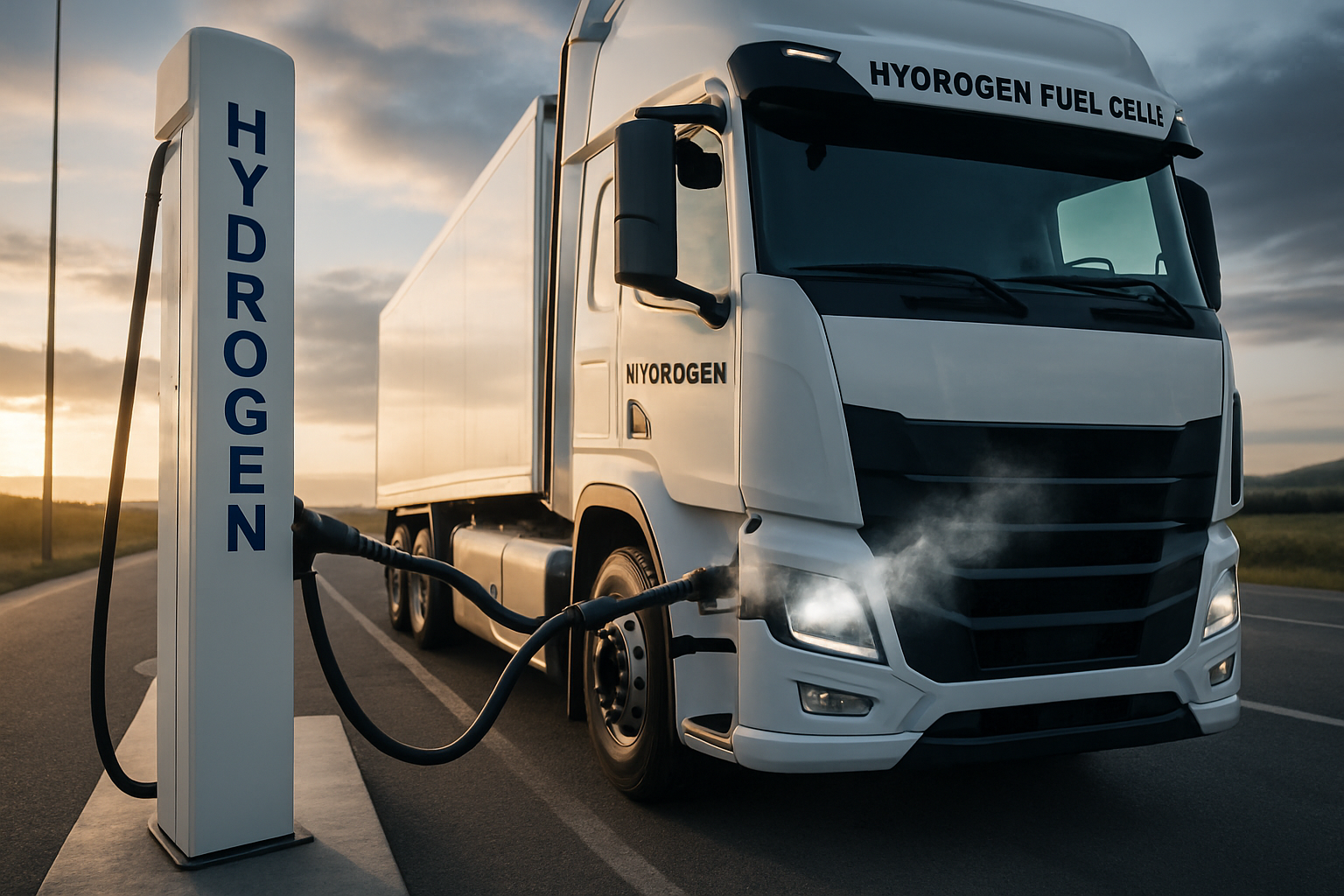Harnessing the Power of Hydraulic Hybrid Technology in Heavy-Duty Vehicles
The rumble of a heavy-duty truck engine, the hiss of air brakes, and the distinctive whine of hydraulics are familiar sounds in the world of commercial transportation. But what if these sounds could herald a new era of efficiency and sustainability? Enter hydraulic hybrid technology, a groundbreaking innovation that's reshaping the landscape of heavy-duty vehicles.

The Mechanics Behind Hydraulic Hybrid Systems
At its core, a hydraulic hybrid system is an ingenious method of energy recovery and storage. When a vehicle equipped with this technology decelerates or brakes, instead of wasting that kinetic energy as heat, it’s captured and stored in the form of pressurized fluid. This pressurized fluid is then used to assist in acceleration, significantly reducing the load on the primary engine.
The system consists of several key components: a hydraulic pump/motor, high-pressure accumulators, and a sophisticated control system. During braking, the wheels drive the hydraulic pump, which pressurizes fluid and stores it in the accumulators. When the vehicle needs to accelerate, this stored energy is released through the hydraulic motor, providing additional power to the wheels.
Applications in Heavy-Duty Vehicles
The potential applications for hydraulic hybrid technology in heavy-duty vehicles are vast and varied. Refuse trucks, which make frequent stops and starts, can benefit enormously from this system. The energy recovered during each stop can be used to assist in acceleration, reducing fuel consumption and wear on the main engine.
In the construction industry, hydraulic hybrid excavators are demonstrating impressive gains in efficiency. These machines can capture the energy from the swinging motion of the upper structure, storing it for use in the next cycle. This not only improves fuel economy but also enhances the machine’s responsiveness and power.
Delivery vehicles, particularly those operating in urban environments with stop-and-go traffic, are another prime candidate for hydraulic hybrid technology. The frequent braking in city driving provides ample opportunity for energy recovery, translating to significant fuel savings over time.
Environmental and Economic Impacts
The adoption of hydraulic hybrid technology in heavy-duty vehicles carries substantial environmental benefits. By reducing fuel consumption, these systems directly contribute to lower greenhouse gas emissions. In some applications, fuel savings of up to 30% have been reported, which translates to a proportional reduction in carbon dioxide emissions.
From an economic perspective, the benefits are equally compelling. While the initial investment in hydraulic hybrid technology may be higher than conventional systems, the long-term savings in fuel costs can be substantial. For fleet operators, this translates to a lower total cost of ownership over the life of the vehicle.
Moreover, the reduced wear on brakes and engines can lead to lower maintenance costs and extended vehicle lifespans. This not only improves the bottom line for operators but also contributes to sustainability by reducing the frequency of vehicle replacements.
Challenges and Future Developments
Despite its promise, hydraulic hybrid technology faces several challenges in widespread adoption. The added weight of the hydraulic components can be a concern, particularly in applications where payload capacity is critical. However, ongoing research is focusing on developing lighter, more compact systems to mitigate this issue.
Another challenge lies in the complexity of the system, which requires specialized knowledge for maintenance and repair. As the technology becomes more prevalent, there will be a growing need for technicians trained in hydraulic hybrid systems.
Looking to the future, researchers are exploring ways to further enhance the efficiency of hydraulic hybrid systems. One promising area is the development of digital hydraulics, which could offer more precise control and even greater energy savings. Additionally, the integration of hydraulic hybrid technology with other advanced systems, such as telematics and predictive route planning, could unlock even greater efficiencies.
The Road Ahead for Hydraulic Hybrid Technology
As the automotive world grapples with the challenges of sustainability and efficiency, hydraulic hybrid technology stands out as a powerful solution for the heavy-duty vehicle sector. Its ability to capture and reuse energy that would otherwise be wasted makes it a compelling option for a wide range of applications.
While electric and conventional hybrid technologies have dominated the conversation in passenger vehicles, hydraulic hybrids are carving out their own niche in the world of heavy-duty transportation. As the technology continues to mature and evolve, we can expect to see more trucks, buses, and construction equipment harnessing the power of hydraulics to drive us towards a more sustainable future.
The road ahead for hydraulic hybrid technology is filled with promise. As more manufacturers invest in research and development, and as more fleet operators recognize the long-term benefits, we’re likely to see this technology become increasingly commonplace. In the years to come, the distinctive sounds of hydraulic hybrid systems may become as familiar on our roads as the rumble of diesel engines is today – a testament to the ingenuity and adaptability of the automotive industry in the face of global challenges.




